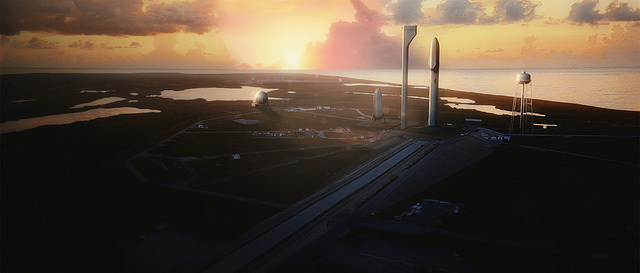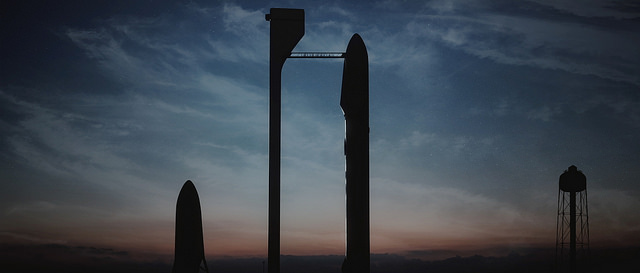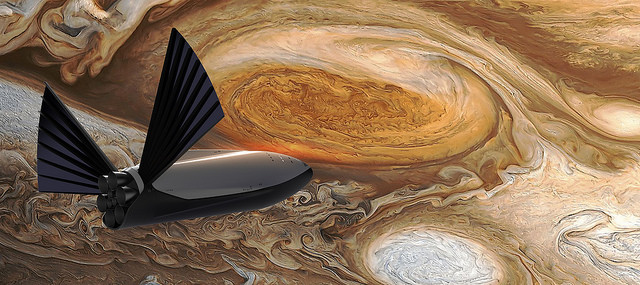Concept video from SpaceX:
[youtube=https://youtu.be/0qo78R_yYFA]
A colony on Mars is no longer just a silly fantasy. It is now in the range of maybe actually possible.
SpaceX announced the outline of their plans for shuttle runs to Mars in order to populate a self-sustaining colony.

My summary of the concept
Here is my simple summary:
A booster rocket, standing 254 feet tall, will have 42 Raptor engines. The Falcon 9 in testing now is powered by 9 Merlin engines. The Raptor engine is three times as powerful as the Merlin. The booster will have thrust twice that of a Saturn V with ability to lift 300 tons into low-earth orbit.
The spaceship will hold 100 people with eventual capacity of 200. The spaceship will have nine Raptor engines and be launched with no fuel on board. It will be 160 feet tall and 56 feet wide.

A tanker, or more likely multiple tankers, will be loaded and sitting on the launchpad.
After the booster lifts the spaceship, the booster will return to the launchpad where it will be quickly reloaded with a previously loaded tanker. The booster will launch again. The tanker will rendezvous with the spaceship and reload in orbit. The tanker will return to launch pad.

Multiple launches of additional tankers will give the spaceship a full load of fuel. The amazing concept here, as pointed out by Behind the Black, is this gives you the effective large capacity of a booster that is four, or five, or six times as large as the massive new booster with only having to reach to that level of a booster powered by 42 Raptor engines.

After taking on a full load of fuel, the spaceship will head to Mars.
At the ideal timing, the trip can be made in 80 days. That time exists about every 26 months. There would be a steady stream of spaceships launched every 26 months.
Dream is it could take somewhere between 40 and 100 years to have a self-sustaining colony of a million people.
The spaceship would arrive at Mars with reserve fuel but nowhere near enough to return to earth. One of the first tasks would be to manufacture fuel on Mars in a solar-powered factory assembled from machinery sent in advance. The carbon dioxide and ice on the planet will be broken down to generate methane and oxygen. Those are the fuels for the engine. Oxygen would also be needed to survive.

Reuse of equipment is critical. Target would be to reuse each spaceship 12 times, each tanker would haul a load of fuel into orbit 100 times, and each booster would be used 1000 times.
One of the most amazing things to me is that when I ponder where SpaceX is now and their goal, I can see that a huge number of incremental steps have been identified.
Go from Falcon to Falcon Heavy, then jump to Merlin engines. Develop a capsule for cargo, then passengers, then larger spaceships. Recover a booster, then reuse boosters, then rapidly reuse boosters to fuel spaceship already aloft. Many other incremental steps later, and a ship with a hundred people are on their way to Mars.
You can see the incremental steps that have already been achieved. Recover a booster at sea. Recover a booster at the launch pad. Go from 1 Merlin engine on board to 9, to the Raptor engine having been test fired last week.
Amazing.
Brilliant.
Possible.
A few articles for your consideration:
- 9/27 – New York Times – Elon Musk’s Plan: Get Humans to Mars, and Beyond
- 9/27 – Space.com – Breathtaking Video Shows How SpaceX Will Send People to Mars
- 9/27 – Space.com – SpaceX’s Elon Musk Unveils Interplanetary Spaceship to Colonize Mars